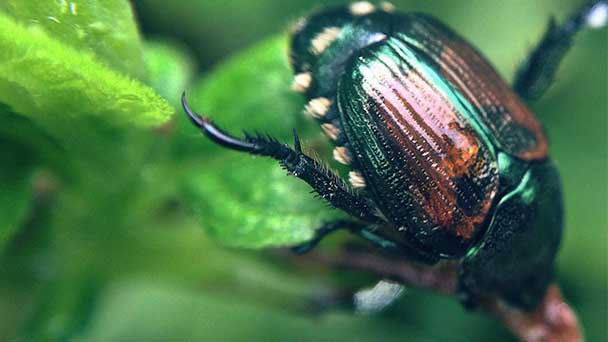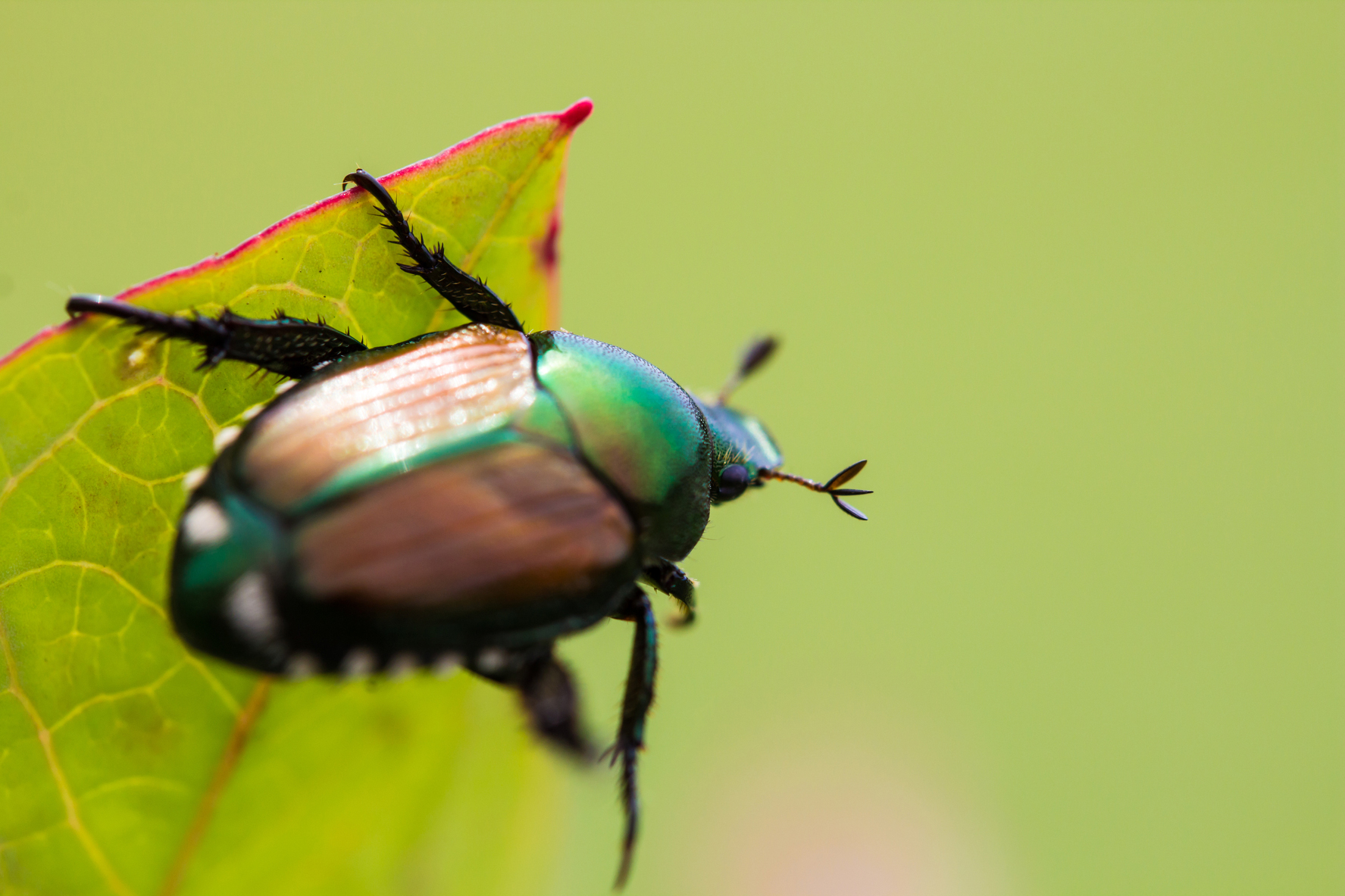Types of garden beetles
Written by Joy
Sep 28 2020

There are about 2,000 different types of garden beetles in North America, most of the beetles we encounter in the garden are nocturnal. These beneficial ground beetles reduce the need for chemical pest control by eating common garden pests, such as:
 Caterpillars (and other insect larvae)
Caterpillars (and other insect larvae)
ant
aphid
maggot
Golden Needle Worm
Slug
The most common garden beetles in the garden are black or dark brown, with long legs that allow them to run fast, and a vertical ridge on the back. Their size ranges from 1/8 inch to 1 inch. These ground beetles live on the surface of the soil and hide under rocks, logs, mulch and other garden debris during the day. They can live up to four years, overwintering under the soil.
Garden beetles have been used as biological control agents to control gypsy moths in New England. They are also used in Maine to control pests on blueberry crops. According to research on ground beetles as biological control agents, they can prevent about 40% of crop damage.
Ground beetle larvae look a bit like garden centipedes, with black or brown segments. However, they have only six legs and small pliers on the head. They mostly stay on the surface of the soil, where they are large predators, preying on soil-inhabited garden pests.
When they eat enough food, they enter the pupal stage and later become adult ground beetles. The life cycle of most ground beetles is consistent with their preferred prey time. For example, ground beetles that mainly eat weed seeds will become adults, just as these seeds mature and fall from plants.
In the first three stages of their life cycle, they are in the most vulnerable state. Many ground beetle eggs, larvae and pupae are killed by mowing, farming and chemical pesticides. As adults, they have a better chance to escape these dangers. Finding small, hidden ground beetle eggs and larvae can be difficult, but it's easier to invite adults into your garden.
To attract these beneficial types of garden beetle to your garden, you can create a simple beetle sanctuary. Build a small garden bed at least 2 feet wide and 4 feet long. You should plant native perennials and grass on this bed and give it a good mulch. Adding some large rocks or logs for decoration and ground beetle hiding places is also a good choice.
Maintaining this beetle sanctuary should be a breeze. You could let the debris accumulate enough to encourage ground beetle eggs, but not too much to stifle the plants. You'd better not mow, cultivate or spray pesticides in this area. In a short time, you can enjoy the benefits of ground beetles in the garden.
Second, you can introduce predators into your environment. The natural predators of bed bugs are praying mantises and most spiders.It is deserved to be noted that this is a very risky measure. Intentionally introducing a new kind of pest into the ecosystem of the yard will cause an environmental imbalance. After the number of different types of garden beetles decreases, you may find yourself facing a mantis or spider problem.
Third, you can put some mantis egg sacs or captured spiders near bushes or trees. In addition, you can attract praying mantises to your yard by planting roses and raspberries. The smell of plants that attract predator different types of garden beetles can also attract praying mantises and a variety of spiders.
Then, you can flush them with a hose. When you see different types of garden beetles begin to gather, you ought to use an ordinary garden watering hose to flush them out of the yard with a strong stream of water. This will not kill the bugs, and it is not a permanent solution, but it can prevent the accumulation of bed bugs. On its own, it proves to be the most effective if done in the early stage of bed bug invasion.
Finally, you can also remove or kill bed bugs by hand. If the size of bed bugs is small, you can step on or reshoot them when you see them in the yard, so as to suppress bed bugs as early as possible. In addition, you can also introduce them into bottles and release bed bugs out of the yard. You’d better wear gloves when doing so to avoid touching them.

ant
aphid
maggot
Golden Needle Worm
Slug
The most common garden beetles in the garden are black or dark brown, with long legs that allow them to run fast, and a vertical ridge on the back. Their size ranges from 1/8 inch to 1 inch. These ground beetles live on the surface of the soil and hide under rocks, logs, mulch and other garden debris during the day. They can live up to four years, overwintering under the soil.
Garden beetles have been used as biological control agents to control gypsy moths in New England. They are also used in Maine to control pests on blueberry crops. According to research on ground beetles as biological control agents, they can prevent about 40% of crop damage.
How to find types of garden beetles eggs and larvae
The life cycle of garden beetle has four metamorphic stages-egg, larva, pupae and adult. Adult garden beetle have about one generation of eggs each year. After mating, the female will lay 30-600 eggs on the soil, leaves, or soil or mulch. Garden beetle eggs are small, white and oval. In just a week or so, garden beetle larvae will hatch from these eggs.Ground beetle larvae look a bit like garden centipedes, with black or brown segments. However, they have only six legs and small pliers on the head. They mostly stay on the surface of the soil, where they are large predators, preying on soil-inhabited garden pests.
When they eat enough food, they enter the pupal stage and later become adult ground beetles. The life cycle of most ground beetles is consistent with their preferred prey time. For example, ground beetles that mainly eat weed seeds will become adults, just as these seeds mature and fall from plants.
In the first three stages of their life cycle, they are in the most vulnerable state. Many ground beetle eggs, larvae and pupae are killed by mowing, farming and chemical pesticides. As adults, they have a better chance to escape these dangers. Finding small, hidden ground beetle eggs and larvae can be difficult, but it's easier to invite adults into your garden.
To attract these beneficial types of garden beetle to your garden, you can create a simple beetle sanctuary. Build a small garden bed at least 2 feet wide and 4 feet long. You should plant native perennials and grass on this bed and give it a good mulch. Adding some large rocks or logs for decoration and ground beetle hiding places is also a good choice.
Maintaining this beetle sanctuary should be a breeze. You could let the debris accumulate enough to encourage ground beetle eggs, but not too much to stifle the plants. You'd better not mow, cultivate or spray pesticides in this area. In a short time, you can enjoy the benefits of ground beetles in the garden.
Manual removal method
First, removing the female ash-leaf maple trees in the yard is a good way. Types of garden beetles are only attracted to female ash-leaf maple trees, so removing them and planting only male ash-leaf maple trees will generally solve the bed bug problem. The ash-leaf maple trees with seeds or fruits are both male and female ash-leaf maple trees. You can also identify the gender by observing flowers. The flowers of female ash-leaf maple trees have only one stalk, while those of male ash-leaf maple trees do not.Second, you can introduce predators into your environment. The natural predators of bed bugs are praying mantises and most spiders.It is deserved to be noted that this is a very risky measure. Intentionally introducing a new kind of pest into the ecosystem of the yard will cause an environmental imbalance. After the number of different types of garden beetles decreases, you may find yourself facing a mantis or spider problem.
Third, you can put some mantis egg sacs or captured spiders near bushes or trees. In addition, you can attract praying mantises to your yard by planting roses and raspberries. The smell of plants that attract predator different types of garden beetles can also attract praying mantises and a variety of spiders.
Then, you can flush them with a hose. When you see different types of garden beetles begin to gather, you ought to use an ordinary garden watering hose to flush them out of the yard with a strong stream of water. This will not kill the bugs, and it is not a permanent solution, but it can prevent the accumulation of bed bugs. On its own, it proves to be the most effective if done in the early stage of bed bug invasion.
Finally, you can also remove or kill bed bugs by hand. If the size of bed bugs is small, you can step on or reshoot them when you see them in the yard, so as to suppress bed bugs as early as possible. In addition, you can also introduce them into bottles and release bed bugs out of the yard. You’d better wear gloves when doing so to avoid touching them.
Latest Updated
- Benefits of Bugleweed - 7 Science-backed Health Benefits
- Bugleweed Dangers & Side Effects - Is It Poisonous?
- How to Plant Evergreen Trees - What You Should Know
- When to Plant Evergreens - Grow Guide for Evergreen Trees
- 12 Wonderful Evergreen Shrubs for Your Garden
- 12 Popular Evergreen Plants with Pictures for Beginners
- When And How To Prune A Lilac Bush Like a Pro
- How to Grow & Care for Lilac Vine (Hardenbergia Violacea)
- Japanese Lilac Tree (Syringa Reticulata) Care & Propagation Guide
- Shumard Oak Pros and Cons - What to Know
Popular Articles
- Winter maintenance of Antirrhinum Majus
- How to Grow Terminalia Mantaly Tree
- How to Grow and Care for Crossostephium Chinense
- How to grow Antirrhinum Majus in spring
- Peristeria Elata (Dove Orchid) Profile: Info & Care Guide
- Underwatered Snake Plant (Sansevieria Trifasciata) - Signs And How To Fix
- How to Care for Brazilian Jasmine Plant (Mandevilla Sanderi)
- How to Grow & Care for Graptopetalum Purple Delight in Summer
- Rosa Chinensis (China Rose): Plant Growing & Care Tips
- How to Care for Baby Sun Rose (Aptenia Cordifolia)